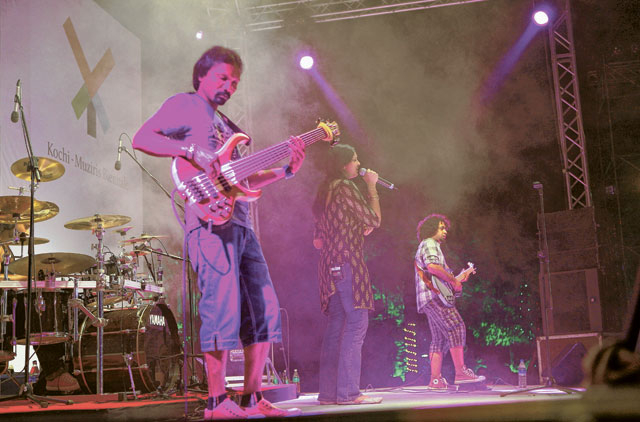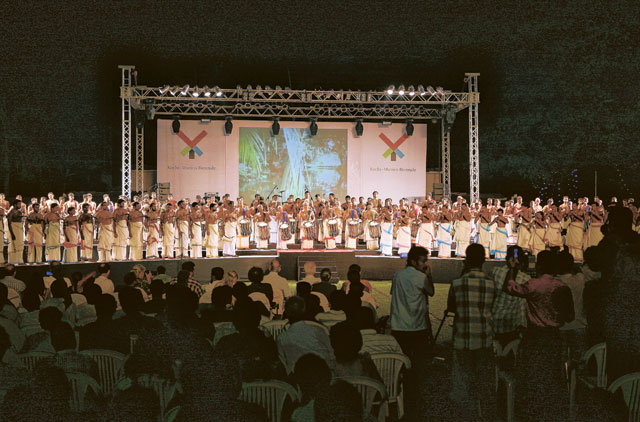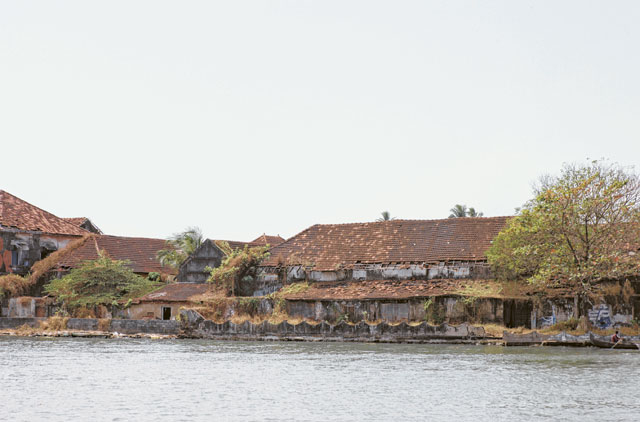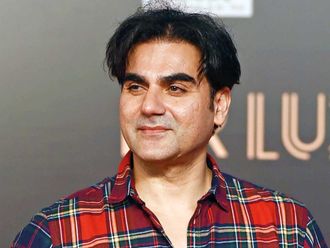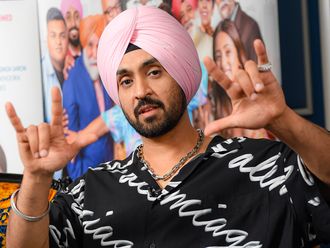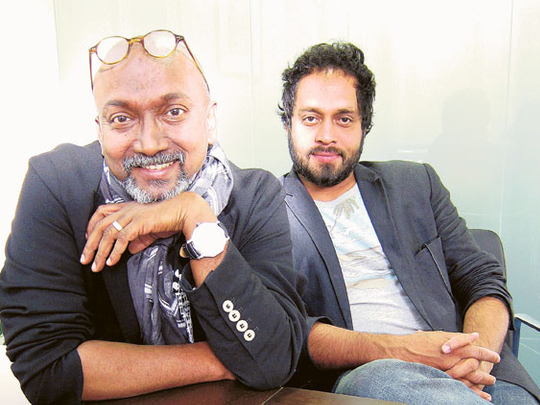
Temple drums. Rock music by a band named Avial. Contemporary artists trying to bring their works to a bustling Kochi. And what better platform than the Kochi-Muziris Biennale?
Brainchild of curator artist Bose Krishnamachari and Riyas Komu, this international art festival, organised by the Kochi Biennale Foundation and to take place in Kochi and Muziris in 2012, will be the first of its kind in India.
This non-profit endeavour will spread across various historical venues in and around the two cities with the aim of being a catalyst for regional growth and economic development.
Krishnamachari says: "In the spring of 2010, Komu and I were approached by the department of cultural affairs, government of Kerala, to initiate a large-scale festival of contemporary visual arts in the state."
After the creation of a non-profit organisation and support from the leading lights of the Indian cultural establishment, the Kochi-Muziris Biennale was conceived. This non-commercial art exhibition will offer artists, curators and spectators a vital alternative to museums and cultural spaces, whose institutional inertias do not allow them to respond with immediacy and flexibility to art's developments.
"The biennale aims at providing people an intellectual lever to appreciate global art, its creativity and interdisciplinarity, its expressions and manifestations in different forms. Art crosses language barriers and becomes a pivot in creating an environment for discourses and dialogues across different social groups and opens the minds of the people to a different view of the world," Krishnamachari says.
Muziris, situated at the mouth of the Periyar and overlooking the Arabian Sea, was a bustling Indo-Roman centre of maritime trade between the 1st century BC and the 5th century AD. Along with being connected to the lives of great personalities such as Adi Sankara, Kannagi and St Thomas, this seaport was also a popular tourist destination for the Arabs, Romans, Portuguese, Dutch and English. However, this flourishing port city was wiped off the map due to floods or earthquakes.
It is this legacy that the biennale will try to rediscover and invoke. Muziris is now being restored to its former glory by the government of Kerala's Muziris Heritage Project.
Already, several comparisons have been drawn between the Kochi-Muziris Biennale and other biennales, such as the one in Venice, but organisers want this project to develop an identity of its own.
"Comparisons can only be drawn in terms of the similarities in the cultural bearings and geographical and topographical layout. Both the places have a lot to do with the waterworks that form the arteries of the cities. The difference lies only in the fact that while one has a long tradition, being the first biennale ever, the other is new and has a long way to go," Krishnamachari says.
The event can also not be compared to other visual art displays around the world, such as the Shanghai Art Fair.
"This is a non-commercial project, unlike art fairs. Both showcase the best of contemporary national and international visual art, but the difference lies in the contexts and relevance to the project and place," Krishnamachari says.
With its various exhibitions, seminars, artist-in-residency programmes, performances, conferences, discussions between artists and the public, and educational activities, the Kochi-Muziris Biennale aims reach out to the greatest possible number of visitors. It also includes on its agenda the introduction of new artistic impressions — from paintings, installations, sculptures, video, digital and new media, to performing arts.
"We have the best team working with us. Right from Vikas Dilavari and Radhika Desai, architects and conservation specialists who are working on the restoration of Durbar Hall, to our entire staff, team members and trustees. All believe in the vision that the Kochi Biennale Foundation has taken up and are diligently working towards making this vision a grand success. The board members are distinguished personalities from all faculties. There are representations from the state and central government as well."
The Kochi-Muziris Biennale 2012 hosted its official declaration by former education minister M.A. Baby on February 17 in the presence of ministers, senior government officials, senior artists, scholars, critics and the public.
The event was held at the Durbar Hall ground. Avial, one of the most popular rock bands in India, known for its unique mix of Malayalam folk and rock, played at the inauguration. Then there was the traditional panchari melam, an ethnic percussion ensemble performed during temple festivals in Kerala, by Padmashree Peruvanam Kuttan Marar, supported by 150 artistes in a live audio-visual drumming concert. By bringing both the traditional and the modern side by side on stage, the event was a fitting inauguration to the Kochi-Muziris Biennale 2012.
The biennale has an impressive line-up of talent. "We are still in the process of finalising the names," Krishnamachari says. "We will have about 65 artists from about 45 countries. We are in talks with several national and international artists. With the intrepid spirit of the artist in mind, we call on our audiences to think creatively, embrace new ideas and consider Indian and international art and culture in all its beauty and complexity."
Besides the Vernissage [opening] and the art shows, the event will host workshops, lectures, debates and educational programmes for children in and around Kerala. Supplementing them will be slide and film shows, guided walkthroughs and marathon interviews with artists. There will also be entertainment programmes for those inclined towards other arts "such as cinema [films on arts], music [concerts] and literature [reading sessions]", Krishnamachari says, adding that the focus throughout would be on providing an opportunity to showcase talent and culture.
"The focus with a commercial agenda totally changes the fundamental schema of an event, which is meant to be much larger in terms of aspiration and intellectually more discursive."
The Kochi-Muziris Biennale fills this gap at a time when the Indian art scene and artists are being recognised and Asia is being looked at as a region of artistic importance. "What better way than having your own biennale, where international and national artists, institutions, curators, critics and art-loving corporations converge on a single platform?" Krishnamachari says.
He and Komu call it a fulfilment of their dreams. "This is definitely our dream project. And we are thankful to the Kerala government for offering us this responsibility. As citizens of this country, we seek to reflect the new confidence of Indian people who are slowly, but surely, building a new society that aims to be liberal, inclusive, egalitarian and democratic."
The time has come, Krishnamachari feels, to tell the story of cultural practices that are distinct to the Indian people and local traditions, practices and discourses that are shaping the idea of India.
"As artists and curators, we aspire to pave a way for showcasing contemporary Indian art manifestations alongside the best of international contemporary visual arts and its practices, and in the process shift towards a more democratic and open ethos for the Indian arts," he adds.
This biennale promises to appeal to the common man — the man on the street, the young college student, the bored teen in a classroom and the housewife who knows nothing about visual arts.
"The biennale is for artists, the arts industries and the common man as well. Arts and culture form a fundamental part of an open, enlightened society and give a unique insight into understanding global interactions. A biennale is not limited to gallery spaces where a common man will seldom have the courage to open the door and explore art. It takes place in a larger and a more open setting, where a proactive engagement of the locals and visitors is encouraged through participation, attendance and volunteering," Krishnamachari says.
The Kochi-Muziris Biennale will be a forum for learning at various levels, across different social groups and gender. This will be achieved through a range of rich educational programmes. Through this, it hopes to further invigorate the city and engage local citizens, visitors and artists in education, alliances and cooperation through its various activities and projects.
Studies have proven that engagement with arts and culture affects positive changes not just in personal development but also in the society at large. The Kochi-Muziris Biennale aspires to be the raison d'être towards creating a better social eco-system.
"This is just the beginning. Numerous artworks, varied ways of expression, different countries, all showcase the diversity of the real world. The Kochi-Muziris Biennale aspires to give a new view of, as described in the title of Aldous Huxley's book, ‘a brave new world'," Krishnamachari says.
Bose Krishnamachari
Born in Kerala in 1963, artist and art activist Bose Krishnamachari’s diverse artistic and curatorial practice include drawing, painting, sculpture, photography, furniture, design, installation and architecture. His artistic endeavours plumb creative depths to give contemporary Indian art a novel direction.
Krishnamachari, who at present works in Mumbai, has exhibited in several important solo and group exhibitions, including ‘Gateway Bombay’ at the Peabody Essex Museum (2007), ‘Indian Highway’ at the Serpentine Gallery, the Astrup Fearnley Museum in Norway, the Herning Museum of Contemporary Art in Denmark and the Lyon Contemporary Art Museum.
His curatorial projects include the seminal exhibition ‘The Bombay Boys’ (2004), the travelling project ‘Double-Enders’ (2005), LaVA (Laboratory of Audio Visual Arts) (2007) and ‘guest curator’ at the Indian pavilion of ARCO-Madrid (2009).
In 2009 Krishnamachari created Gallery BMB in south Mumbai with a vision to bring the best national and international art to India.
Riyas Komu
Riyas Komu, born in Kerala in 1971, has had his critically acclaimed works exhibited extensively in India and abroad, which include several key works that focus on the political and cultural history of Kerala. His works are part of the larger narrative of the making and unmaking of artistic influences.
In 2007, he was one of two artists from India to be selected by curator Robert Storr for the Venice Biennale. Recent exhibitions include shows at the GEM Museum for Contemporary Art (The Hague, The Netherlands, 2009), The Astrup Fearnley Museum of Modern Art (Oslo, Norway, 2009), the Shanghai Museum of Contemporary Art (China, 2009) and the Gwangju Emerging Asian Artists Exhibition (Korea, 2010).
He is the first Indian artist to have held a solo exhibition in Iran (Azad Art Gallery, 2010). Significant works focusing on football include ‘Mark Him’, with the Indian national football team, and ‘Left Legs’ with the Iraqi national football team (2008/2010).
Later this year his work will be exhibited at the Centre Pompidou, Paris, France, as part of their India Exhibition.
Linda George is a writer based in Thrissur, Kerala.


